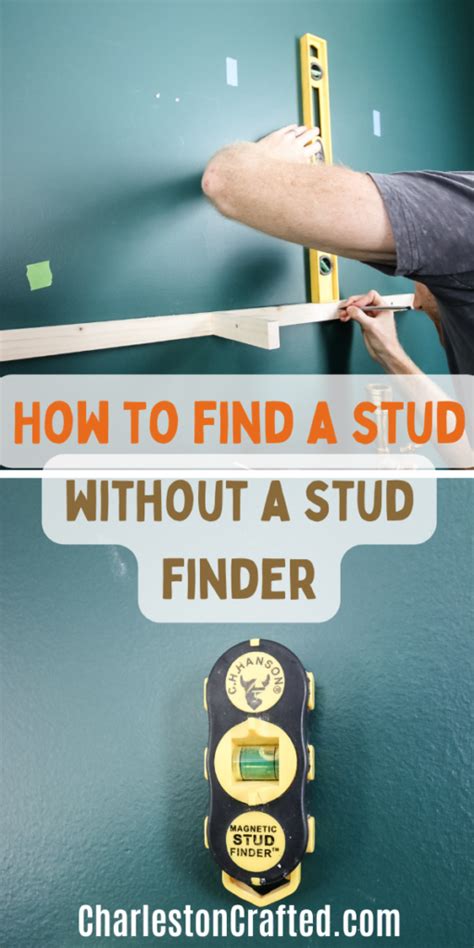How to Find a Stud Without a Stud Finder: DIY Methods and Safety Tips
Finding wall studs without a stud finder can be tricky, but it's definitely doable! Knowing where studs are located is crucial for hanging heavy objects securely and avoiding costly damage to your walls. While a stud finder is the easiest method, several DIY techniques can help you locate those hidden supports. This guide will explore these methods, prioritizing safety and accuracy.
Why Finding Studs Matters
Before diving into the techniques, let's emphasize the importance of finding studs before hanging anything substantial. Hanging heavy items on drywall without hitting a stud could lead to:
- Damage to your walls: The weight could cause the drywall to crack or the screw to pull out, leaving unsightly holes.
- Injury: A poorly secured object could fall, causing injury to people or damage to property.
- Insecure hanging: Items might not hang straight or securely, potentially leading to damage or accidents.
Therefore, always prioritize locating studs before installing shelves, mirrors, artwork, or any heavy object.
Methods for Finding Studs Without a Stud Finder
Several methods can help you locate wall studs without relying on a specialized tool. Remember to always exercise caution and prioritize safety.
1. The Tap Test
This is a classic method, relying on the difference in sound between a stud and the surrounding drywall.
- How to do it: Gently tap the wall with your knuckles, moving slowly across the area where you want to hang something. Listen carefully for a difference in sound. A solid, thudding sound usually indicates a stud. A hollow, less resonant sound suggests you're tapping on drywall.
- Pros: Simple, requires no tools.
- Cons: Not always accurate, especially in areas with insulation or thick drywall.
2. The Magnet Test (Limited Reliability)
Some nails and screws used in framing might be slightly magnetic. This method is highly unreliable but worth trying as a last resort.
- How to do it: Use a strong magnet and run it along the wall. If you feel a slight tug or pull, it might indicate a nail or screw within the stud.
- Pros: Simple, requires minimal materials.
- Cons: Highly unreliable, as many modern constructions don't use magnetic fasteners. False positives and negatives are extremely common.
3. Visual Inspection
Sometimes, you can spot clues that give away stud locations.
- How to do it: Carefully inspect your walls for subtle clues such as:
- Slight variations in texture or paint: Sometimes, the presence of a stud will subtly alter the wall's texture or the way paint sits.
- Existing nail or screw holes: If you find nails or screws that appear to be securely holding something, that area is likely a stud.
- Adjacent wall sections: If you know the location of a stud in one area, adjacent studs are usually spaced 16 or 24 inches apart. Use a measuring tape to estimate other stud positions.
- Pros: Can be very helpful if combined with other methods.
- Cons: Relies on visible clues which might not always be present.
4. Using an Existing Outlet or Switch Box (Most Reliable DIY Method)
Most electrical outlets and switch boxes are attached to studs for support. This can be your best bet for a DIY solution.
- How to do it: Locate an electrical outlet or switch box and carefully measure outwards from its edge, as most boxes are directly fastened to the stud. Standard spacing is typically 16 inches on center between studs.
- Pros: Generally accurate, offers a reliable starting point for measuring the rest of the wall.
- Cons: Only useful if there's a convenient outlet or switch box close to where you need to hang your item.
Safety Precautions
- Always double-check: Use multiple methods to confirm stud location before drilling or hammering.
- Avoid power lines: Be aware of the location of electrical wiring before drilling into the wall.
- Use the right tools: Employ the correct drill bits and screws for the weight of the object you're hanging.
- Start with a small pilot hole: This prevents splitting the wood and helps guide your screw more accurately.
Finding studs without a stud finder takes patience and attention to detail. Combining the methods described above will increase your chances of success, but remember: safety should always be your top priority. If you're unsure, it's always best to err on the side of caution and consult a professional.
